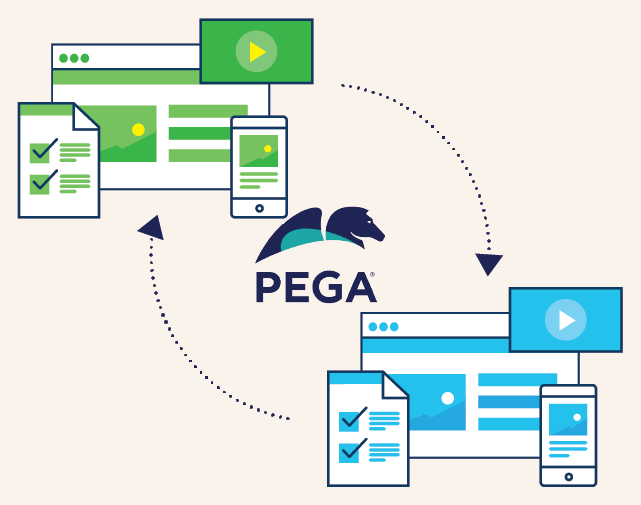
The age of developing the next big mobile app is a thing of the past. You’ve got the top 10 apps on iOS and Android devices: Zoom, TikTok, Google Meet, YouTube, WalMart, Facebook Messenger, Gmail, Instagram, CashApp, Snapchat, Amazon, DoorDash, Netflix), and they’re solidified. These apps have huge content modes behind them, they are all run by huge multi-billion-dollar companies; therefore, competing with them is extremely difficult. How many apps does someone open per day? Most people just go back and forth between a few apps in the top 10 and most of these apps are social media or messaging platforms. Then how does a tech company or regular software developer stay afloat amidst this supersaturation in the app world? What do I think is the next big thing; decentralized links.
Decentralized links are not new; some current examples are websites like Patreon, Shopify, and Amazon affiliate links. What is unique about these links is that a user will not have to intentionally visit a different website, because these links will be available on the platform that the user is already visiting, like social media platforms. For example, if Taylor Swift includes a link to a website in her most recent YouTube video or Instagram post, that link can go viral because so many of her fans will visit it. So, influencers are the vehicle of distribution, and the links they promote are the modern-day “trendy apps.”
What does that look like? A user clicks on a decentralized link, and then what? Presumably, they will be led to a beautiful landing page which would be convincing and get the user to continue further into the site interaction. So, the developer may think that they need strong web design skills (Photoshop, Illustrator, CSS, JavaScript, HTML) and also complex back-end coding (C++, Assembly, Python) … that’s a tall order. But that is not true, the developer actually only needs one language, a low-code/no-code (LCNC) tech stack like Pega.
Why is this choice better than a bunch of different languages? The answer is simple, reusability. If the goal is to create a product/service that many people will use, probably the best way to get an influencer to promote a link is to customize the link to that specific influencer. Vanity URLs, with a messaging/email aspect included, are a way that fans can interact with influencers. Creating a custom platform for every influencer that promotes the link would be nearly impossible using a tech stack utilizing several different coding languages, but simple for a LCNC tech stack like Pega. Software reusability enables the developer to update only the user interface, slogan, and/or the means of communication, without fundamentally changing the entire architecture for the link. The LCNC movement is the way of the future because it allows developers to quickly change things to have several working products/services that can perform similarly but be tailored to a specific audience/end user.
To give a real-world example of Pega’s reusability with Segue Pega applications, the Segue Small Business Innovative Research (SBIR) team recently completed a Pega prototype as a redesign to the existing Air Force Management Internal Control Toolset (MICT) application. Our team had the benefit of acquiring the United States Marine Corps (USMC) Managers’ Internal Control Program (MICP) Mangers’ Internal Control Remediation and Reporting (MICRR) Pega application and after careful analysis and research, we were able to incorporate select frameworks from the MICRR application into our MICT Pega Situational Layer Cake (SLC). The team took advantage of the MICRR application as a basis to build the MICT structure but just reused the MICRR code and modified it to make a new product for the MICT prototype. The ability to reuse the USMC’s existing Pega code saved a great deal of time, proved to be an excellent training experience for reuse, and also demonstrated to the Government how Pega can be used to build shareable capabilities across the AF enterprise.
The concept of an app has decoupled into product and distribution. As for product, these are the decentralized links; and they could be anything that scales, both digital and physical (for instance: photos, videos, recipes, PDFs, eBooks, tools, or services). At the end of the day, even if a brilliant developer codes a neat function which generates a random number efficiently in a Linux dark-mode terminal – that’s not product. LCNC technology allows products/services to be deployed very quickly due to the aspect of their reusability (specifically with aspects like landing page setups, email marketing, productivity, domain name setup, customer relation management systems, checkout forms, etc.). With a LCNC like Pega, these products can be deployed so quickly that other programming languages cannot keep up, because an entirely new product would have to be made instead of just reusing something that already worked and modifying it. The technology behind Pega’s LCNC and reusability enables applications to be built much easier and quicker than non-LCNC products that need to be reproduced from the beginning. The art of coding with languages like C, Java, Python, etc. will soon be an exercise in futility instead of a robust tool which can be consumed. Art requires validation – even if cryptic lines of code exist out there which do something wonderful, if no one discovers it because a LCNC product already exists which does the job – then it’s going to be too late, and therefore lost.